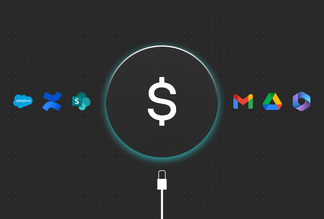
Drinking from the firehose of company updates
Have you ever tried to drink from a firehose? I suspect not, but if you did, you'd fail. The pressure of the water means you'd be unable to slake your thirst. You'd more than likely get knocked over, drenched, but remain thirsty. This is the paradox of the firehose.
In our current workplaces, the firehose still exists. It's not a firehose of water, though. Instead, it's a firehose of information. We live in a time with unparalleled means of communication.
Suffering from communication overload in the workplace?
There used to be letters, faxes and telephones. Now that list* includes emails, Skype, Teams, Zoom, Messenger, Slack, WhatsApp, Facebook, Twitter, Github, TFS — the list goes on and on. However, you replace the water with information in the form of updates. You can feel like you're drowning in a sea of tiny pieces of information that you're trying to make sense of as well as do your job. 30% of people will check an email the moment they get a notification!
If like most people, you use several platforms in your day-to-day life, both personal and professional, then you're used to the notifications on your phone lighting up at least every few minutes. Your phone is announcing "I have an update for you!" and it's distracting if you're working on something else. The temptation is to check in on what's happening.
You may often find that you are getting a lot of pings from the same place. A Slack thread or email chain will keep nagging at you for attention. It'll beg for your eyeballs over and over. Eventually, you succumb to the noise and switch from valuable work to attending to the noise. This is ‘infomania’ in action, and it reduces your ability to focus. According to the University of London, infomania can have as much of a negative effect on your performance as losing a night of sleep.
Here's the thing though. Whether you look at the noise or not, the notifications will still be there in a minute, an hour, and tomorrow. If something is essential, it'll get to you eventually by a channel that you dedicate, either officially or just in your head, as important. If it's not important, then it doesn't matter if you don't see it right now, right?
The firehose will always be there, and you'll always struggle to drink from it, but if you have a taste every once in a while, get a flavor for how things are going, you'll know just enough to understand whether you need to dive in, or if it can wait until later.
How many meetings is too many?
Information overload is also a consequence of having too many of the wrong kinds of meetings. In today's world, meetings are a panacea for what ails an organization. Got a problem? Meet with a bunch of people. Need to communicate something? Meet with a bunch of people. Lonely? Meet with a bunch of people. 71% of senior managers claim meetings are unproductive and inefficient.
Holding a meeting is the default method of communication in most companies, but this is often not the right approach. There's a whole other blog post to be made on meeting etiquette. Still, the meeting you're about to have has a "standing agenda" that is the same list of things to talk about every time you meet. This means you're probably having a status meeting and you should consider other methods of sharing that information instead.
The only legitimate reasons to have a meeting are:
- To solve a problem or,
- To make a decision.
Anything else is a status update or a question. You don't necessarily need to meet for that. You might want to meet, depending on your context, but you should consider other channels for this kind of info communication first.
What channel? Well, that's up to you, but it's worth discussing with your peers. Perhaps you can have an #updates channel in slack that people drop their updates into, or a #questions channel in Discord.
What is the context of your communication?
Thinking about the context for your communication allows your intended audience to get into the right mindset to receive and act on your comms. For example, if you want to comment on a Google Doc, then add the comment to the Google Doc. Don't send the comment as a DM to the author on Microsoft Teams. Content switching wastes time by forcing people to jump between platforms to fulfill requests or make changes.
Imagine that you're busy writing an email. You get a DM from a colleague "Hey, read the doc, here's some comments … ", now you have to read the DM, which involves stopping what you were doing, then visiting the Google Doc to check what the comments mean, then back and forth between the DM and the doc. Much better to comment in the doc. After all, Google will let the author know you've made comments and can attend to them in their own time.
Now I have many fire hoses
The problem is, if you've got enough going on, there's probably now several, smaller fire hoses from which to drink. You've got updates in Google Docs, messages and DMs in Slack, and Confluence is sending you updates from every page you follow. Then there are the emails, phone calls, and keeping up with Aunt Betty's snowboarding holiday on Facebook.
What you need is a personal assistant. The trouble is, none of us are high-powered executives that have someone to manage their calendar or dry-cleaning. So, the next best thing is a digital personal assistant – a platform that allows you to get the right updates, in the proper context and at the right time.
That's where Qatalog comes in. With integrations into many popular platforms and tools, you get updates from your team, your apps and your documents, all in one place. Best of all, you get them at the right time — when you want them. All your people, work and tools. None of the noise.
* Some people still use fax machines. I know, right?



